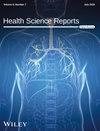Stomatognathic Diseases Reveal Bidirectional Link Between Diabetes Mellitus and Coronary Artery Calcium: A Cross-Sectional Study Using Multi-Way Array Analysis
Abstract
Background and Aims
Understanding the relationship between diabetes mellitus and cardiovascular risk is crucial for effective healthcare. Diabetes mellitus (DM), a complex metabolic disorder, is closely linked to an increased risk of cardiovascular diseases. Factors such as endothelial dysfunction, inflammation, and metabolic disturbances contribute to this heightened risk. Gaining insights into this relationship can help healthcare professionals provide timely and personalized care. This study explores the bidirectional relationship between DM and coronary artery calcification (CAC), mediated by stomatognathic diseases, using advanced data science techniques.
Methods
This study uses a publicly available data set of 212 patients from Dutch hospitals to explore the connections among patient characteristics, stomatognathic diseases, and CAC score. Tensor decomposition techniques were employed to investigate the relationship between DM and CAC. Patient characteristics and dental conditions were integrated into tensor models for three groups: without DM, with DM, and with CAC. Additionally, nonlinear dynamics, visual analyses, and machine learning enriched the investigation.
Results
Tensor decomposition revealed patterns across the three categories, incorporating patient characteristics and dental conditions. The -NN (nearest neighbor) search examined similarities among tensor coefficients, highlighting a bidirectional link between DM and CAC. Fuzzy recurrence plots and entropy measures quantified distinctive patterns among subjects without DM, with DM, and with CAC.
Conclusion
The reciprocal interaction between DM and CAC tertiles 2 and 3 emphasizes the need for a broader analytical perspective. Incorporating patient characteristics and dental health in the analysis uncovers latent patterns, providing insights. Oral conditions emerge as key indicators, offering a detailed view of the complex relationship between DM and CAC.


 求助内容:
求助内容: 应助结果提醒方式:
应助结果提醒方式:


